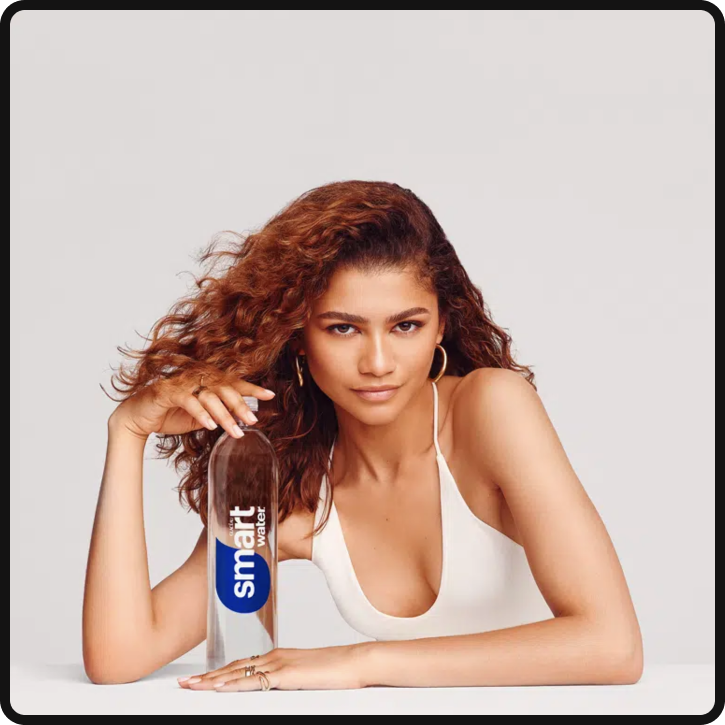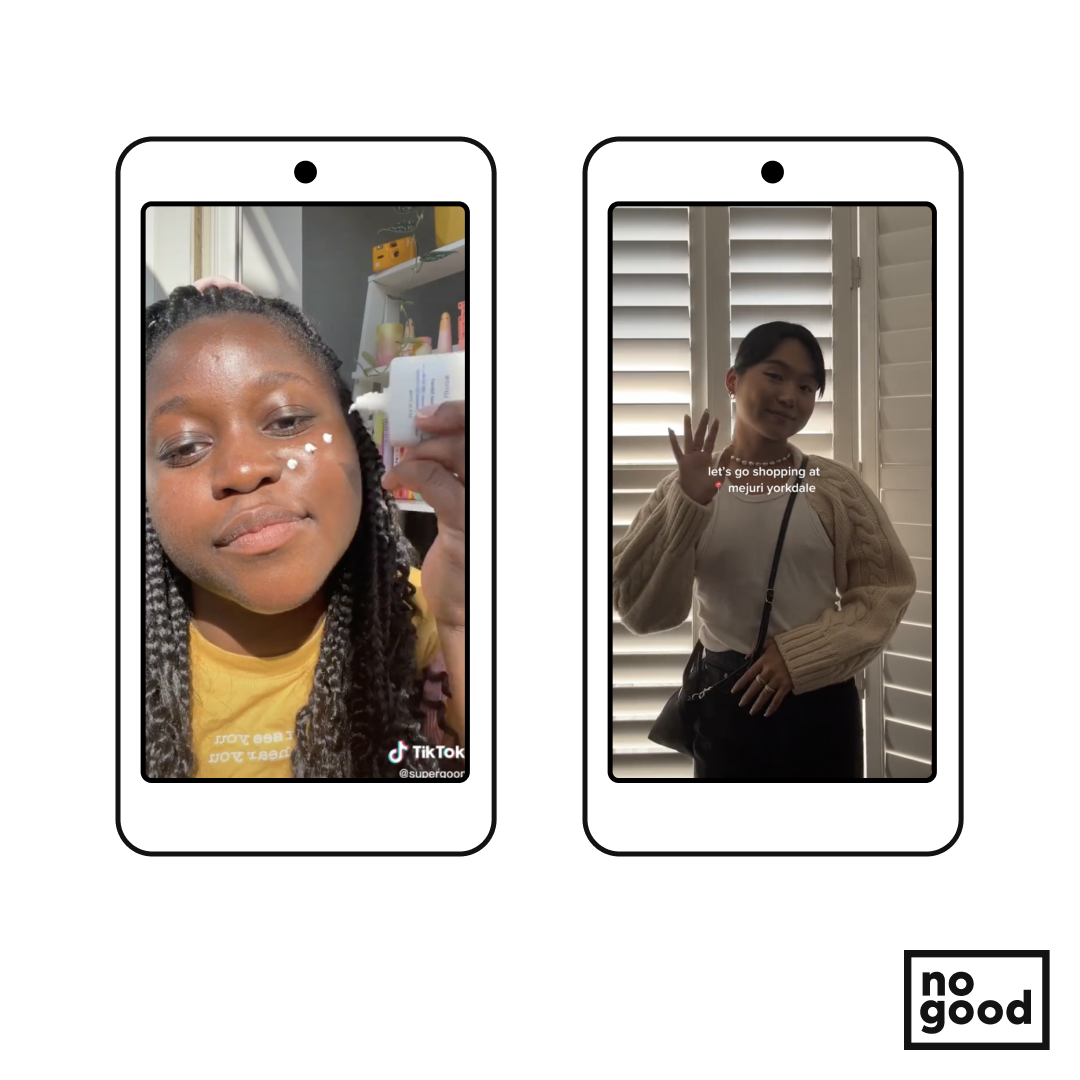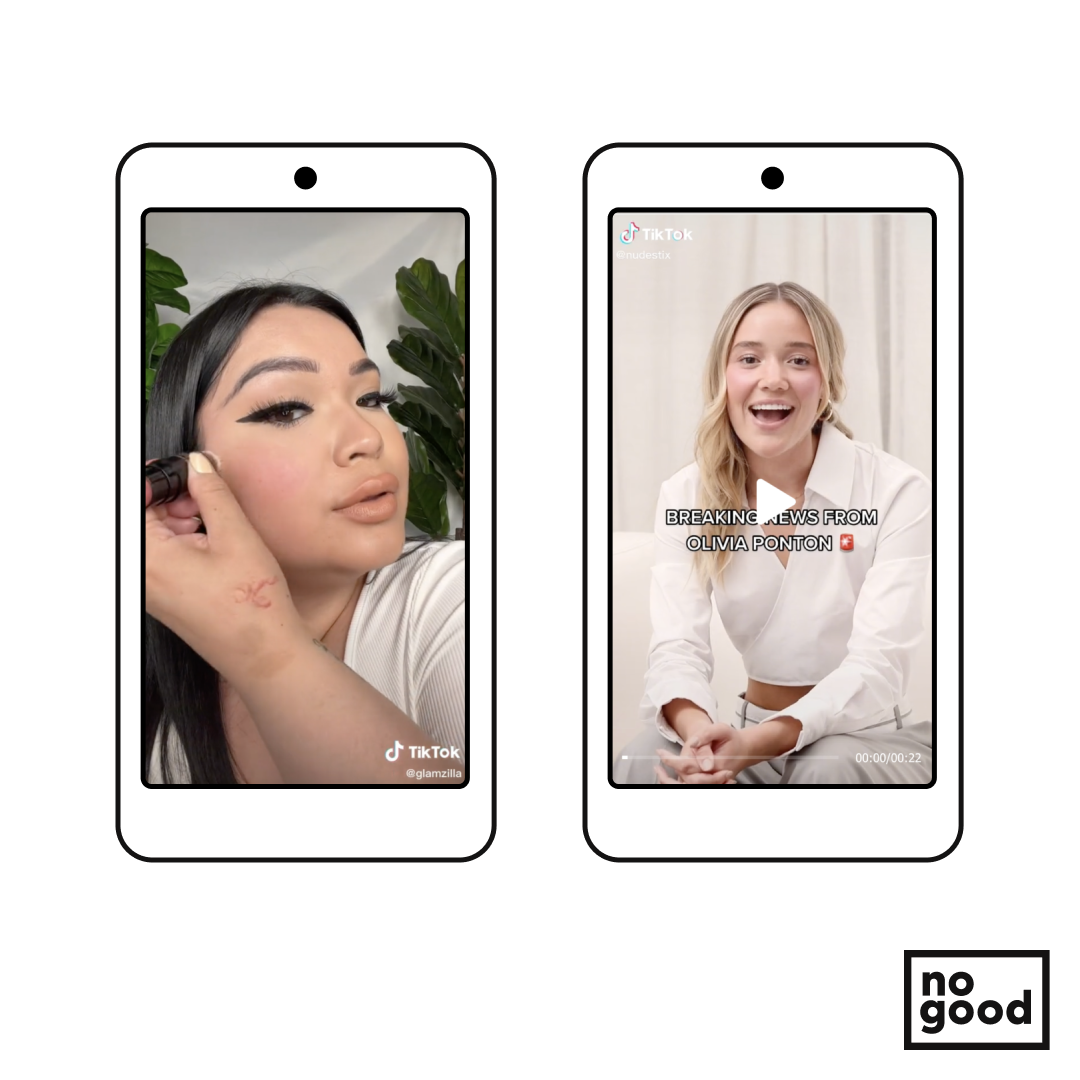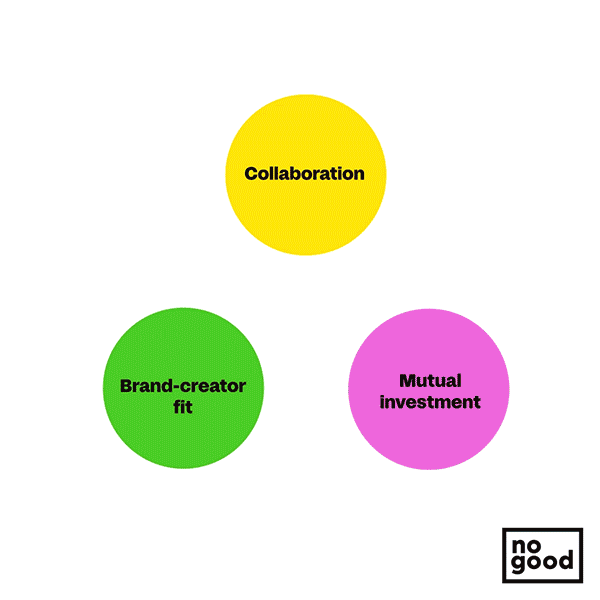The nature of creator and brand partnerships is changing — and for a good reason. Influencers can no longer just be a pretty face or a curated feed, they need to also deliver value to be considered credible. As influencers and creators evolve into individual figures with their own personal brand, their success is being measured based on their ability to build a community that trusts and listens to them. This leverage that they have on certain niche communities becomes the centerpiece of today’s brand partnerships, as brands look to form lasting relationships with creators that bring a unique strategic advantage of reach and community trust. With the launch of Kim Kardashian’s newest private equity firm and TikTok creator Olivia Ponton’s new role as an investor of Nudestix, the rise of the creator economy is ushering in a new era of creator-brand partnerships that extend beyond its traditional transactional model.
What exactly caused this shift, and what does the future hold for creator and brand partnerships?
Let’s talk about it.
A brief history of creator-brand relationships
The inception of the concept of influencer relationships began with affiliate programs and sponsored content. The first model of such relationships were generally transactionally-driven: brands pay influencers to deliver content, influencers create and deliver the approved content, then the agreement is complete. As a result of their influencer sponsorship, brands (ideally) acquire new customers, increase their brand awareness, and generate revenue from the traffic generated from the influencer content. Although some people tend to use “influencer” and “creator” as interchangeable terms, the difference in these roles is actually in the name; influencers influence consumers to purchase a brand’s product or service, whereas creators tend to focus more on creating value for the end consumer. The influencer has little autonomy over the type of content they create, and are only invested in the brand insofar as receiving compensation for their work.

As influencer marketing and sponsored marketing campaigns became more and more popularized, influencers gained more autonomy, equity, and experienced increased access to opportunities with brands across a variety of industries. Relationships shifted from a one-time, transactional model to more long term, value-driven collaborations, and brands started to see the value in actively involving influencers in the creative and strategic process of content ideation. This shift is in part due to a greater consumer demand for authenticity, which helped conceive the notion of the “genuinfluencer” — also known as content creators that prioritize authenticity and brand values over straightforward monetary transactions.
These genuinfluencers provide all kinds of value to brands; in addition to creating sponsored content, they also play the role of brand ambassadors, creative partners, event attendees, and more. Beyond the concrete deliverable of branded content, genuinfluencers and content creators provide all kinds of value to brands, helping them relate to their target customers and break into new markets. On a macro level, this reflects a shift from a transactional model to a more synergistic relationship between a brand and a creator where a creator brings in the element of reach and community while the brand brings in the element of product, research, and/or solution.
In 2020, the rise of TikTok spotlighted the importance of micro influencers and niche communities, thereby amplifying the existing shift towards more authentic collaborations that are driven by a genuine interest in a certain niche topic or brand. Given the immense growth of the creator economy, content creators now have more control over the brands they choose to work with. Micro influencers thrive on building trust with a small and loyal group of users, hence they are more picky with only collaborating with brands that they genuinely care about and want to recommend to their tight knit communities. Strategies are moving away from inauthentic, unrelated brand deals like Zendaya’s partnership with Smart Water, and are moving towards partnerships that make sense from the perspective of a creator’s specific audience or topic niche.
For example, Supergoop’s collaboration with Abena (@travellingtuesdays) was a logical move for the brand, as the travel TikTok creator is likely to be in the sun a lot and would naturally require sun protection. The same goes for Mejuri’s social media partnership with lifestyle TikToker Paul Kunwoo Lee (@ekunwoo); as a fashion and lifestyle creator, Mejuri and Paul exist within the same topic niche and are likely to have similar target audiences. Paul’s own personal style is classic and minimalist, much like Mejuri’s style of jewelry and overall brand image. The key to this shift is ultimately in the intentionality and rationale behind each new partnership. The transactional model is being replaced by more thought-through and strategic, relationship-driven partnerships. Brands should and are indeed already beginning to value quality over quantity and creator authenticity over a certain number of followers or fans.


All in all, the history and evolution of creator and brand partnerships thus far has been focused on moving from a transactional model towards a deeper and more authentic relationship between brands, creators and consumers. The modern partnership is no longer beholden to the rigidities of a transaction-based sponsorship agreement, and is instead all about mutually beneficial collaborations and creating genuine value for all parties involved.
Introducing the influencer-investor
In the history of creator-brand relationships, influencers and creators have not historically been considered for investment opportunities — but that is changing now. Nudestix has announced that TikTok creators Olivia Ponton and Stephanie Valentine (Glamzilla) are now not only ongoing partners and ambassadors of the brand, but also investors in the company. Additionally, celebrity makeup artist Mary Philips and celebrity Hilary Duff also have equity in the brand as investors. Josh Richards, a 20 year old TikTok creator, launched a $15 million venture capital fund to invest in early-stage startups in the consumer, fintech, health and media sectors. Richards joined forces with fellow partners and Gen Z TikTok stars Griffin Johnson and Noah Beck, and intends to leverage his platform and large audience to promote the brands that he is investing in, rather than merely promoting their products as a content creator. Joining the list of celebrity and influencer investors are Kim Kardashian and Charlie D’Amelio; Kim Kardashian has launched SKKY Capital, a private equity firm to invest in consumer and media brands, while the D’Amelio family launched a 444 Capital, a venture capital fund to invest in high-growth startups.


The introduction of the influencer-investor role is a culmination and reflection of the larger transition from transactional relationships to strategic partnerships. The hybrid model of the influencer-investor marks the beginning of the next stage in the evolution of the brand and creator relationship, where both parties are equally involved to bring greater and differing value to the collaborative relationship. Although celebrities have long amassed investment portfolios, content creators doing the same is indicative of how the relationship between creators and brands has fundamentally changed. Rather than just being partners for content output and revenue growth, influencers and creators are now becoming valued members of a brand’s team and are actively invested (pun intended) in the success of the company’s overall growth. This shift in role makes sense when considering the amount of time and energy that creators put into building their relationships with brands; if they are being long-term, authentic advocates of the brands, why shouldn’t they evolve that agreement into a mutually beneficial partnership that extends beyond the typical brand-influencer transaction?
From the brand side of the equation, founders typically look for VCs that are able to provide value to their company beyond just the monetary element. This value can come in the form of strategic planning, network introductions, or talent acquisition. When creators become VC fund owners and investors, they provide unique value to brands through their ability to leverage their expertise in the industry as well as their loyal and established audience base. As consumer trust continues to grow in importance, the value of a loyal and engaging community thus becomes a key ingredient to the success of a new product or business. Since these creator-investors are monetarily and psychologically invested in the brands that they choose to work with, they are more likely to either guarantee investment allocation (for VC funds) and acquire new, high-value customers (for individual investors).
How to build creator and brand partnerships
There are 3 key aspects to building a creator-brand partnership that ensures mutual growth and authentic value creation: collaboration, fit, and mutual investment. Let’s break it down.

1. Collaboration
Traditional brand-influencer relationships were more transactional than they were partnerships. They were agreements based on what needs to be delivered and what needs to be received as a payment for that work. Conversely, the evolution of creator-brand partnerships is now moving towards a more collaborative model, and that collaborative element comes in through equal say, mutual value creation and authentic synergy. Brands should leverage creators’ expertise and experience in the industry, and involve them in decisions surrounding the product, the strategy, the creative direction, and the brand’s overall growth trajectory. Creators also bring a unique value of community to the table by allowing brands to tap into their loyal and trusting audience base. Since both the brand and the creator are equally invested in the partnership — whether it be monetarily, emotionally, or both — both parties should have an equal say in how the partnership should take place.
2. Brand-Creator Fit
True authenticity and sustainable growth is achieved through a good brand-creator fit. This means that brands should be building relationships with creators that already know and love their product or service, and would naturally recommend the brand to their existing audience. Rather than paying big-name celebrities and influencers to promote a product or service that they may not even care about, brand-creator fit is about creating organic partnerships based upon shared interests, values, and target niches. Granted celebrity sponsorships still exist, but these relationships are also moving from a more transactional model to more organic partnerships based on intentionality and fit (see Amy Schumer’s partnership with Tampax, which makes sense given that periods and tampons played a prominent role in her Netflix special). By emphasizing fit over fame or follower count, brands will be able to reach the right target audiences that will likely have higher intent and greater loyalty.
3. Mutual Investment
The idea of mutual investment builds on the increasing ubiquity of the creator-investor role. It’s a basic concept of the fact that people instinctively give as much as they are able to take. Value drives further value. When brands and creators are equally invested in a partnership, the value that creators receive from working with brands incentivizes them to create further value for the end consumer. Mutual investment creates a self-sustaining cycle of value creation based on genuine enthusiasm for a particular brand or product; rather than relying on superficial transactions for one-off deliverables, truly investing in a brand will drive both brands and creators to pursue growth driven by the brand mission and the promise that they are making to their end consumer.
The future of synergistic partnerships
It’s clear that we are entering the next phase of influencer equity as creators are becoming brands themselves — meaning that they are going to think like brands. Like any other brand of value, creators are going to be more strategic about how they approach their partnerships moving forwards.
With their renewed sense of authority and empowerment, creators will look to work with brands that they truly feel an authentic connection with, whether it be through shared values, aligned expectations, similar goals, or mutually beneficial growth opportunities.
Creators have always helped brands grow their audience and revenue — now it’s time for the opposite to happen as well. Today’s successful partnerships will be the ones where creators are given the autonomy and opportunity to grow their personal brand and portfolio of expertise through the partnership or investment. This is in line with the growing emphasis for brands to see creators as a true equal partner with real value to contribute to the business, rather than merely seeing them as creative vendors that execute and deliver on content.
Once brands and marketing executives begin to see creators through this evolved perspective of a two-way, mutually beneficial partnership, they will be able to achieve new levels of growth and higher customer LTV that’s built on solid foundations of trust and authenticity.
This is the perspective that we as a company take in our content marketing and TikTok studio services as well as we continue to build genuine relationships with creators that truly care about the brands they are talking about, working with, or even investing in. If you’re ready to build connections that matter with creators that care, talk to us about how you can leverage creator partnerships for your brand’s growth.






